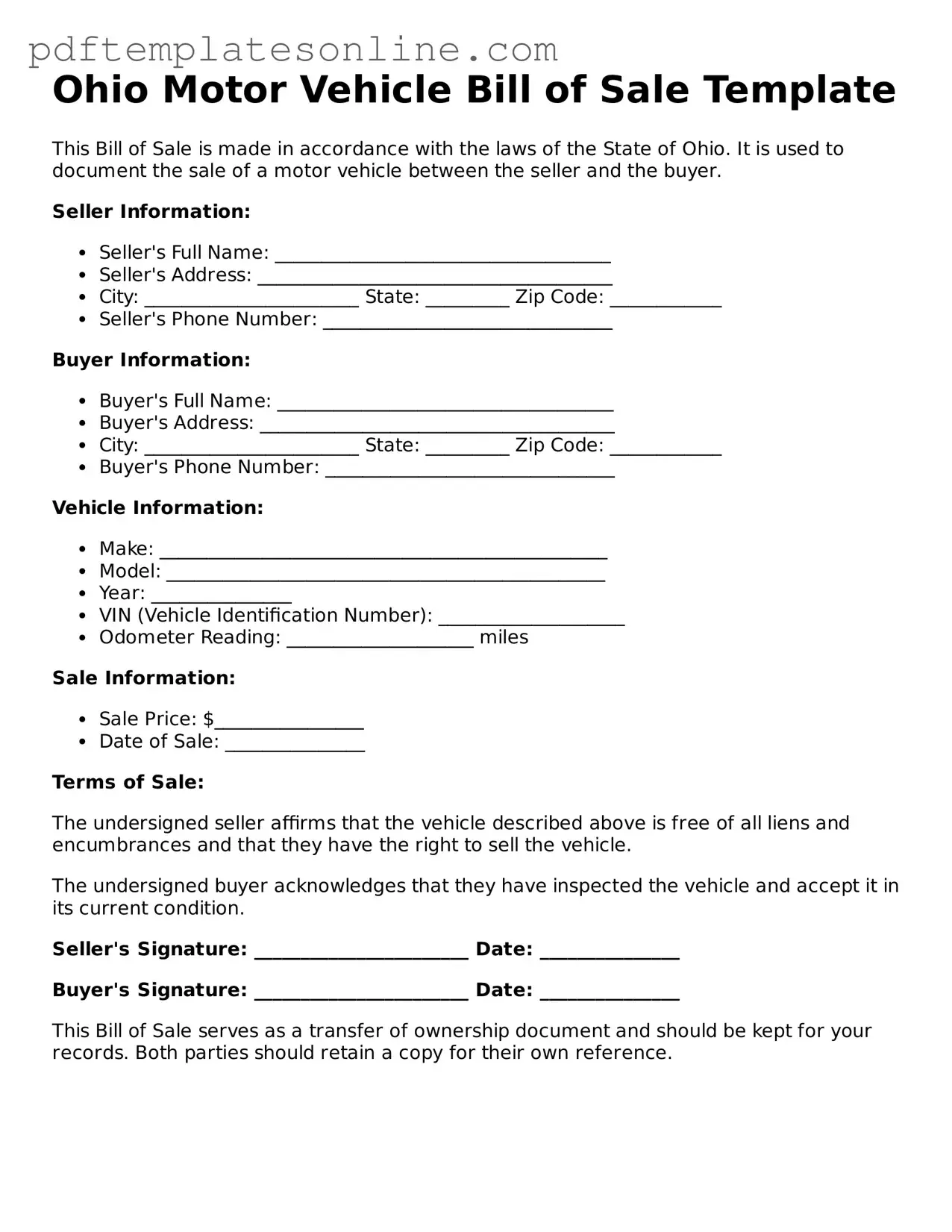Filling out the Ohio Motor Vehicle Bill of Sale form is an important step in the process of transferring ownership of a vehicle. However, many individuals make common mistakes that can lead to complications down the line. One frequent error is neglecting to include all necessary information about the vehicle. This includes the Vehicle Identification Number (VIN), make, model, and year. Omitting any of these details can create confusion and may affect the validity of the sale.
Another common mistake is failing to provide accurate information about the buyer and seller. Both parties' names, addresses, and signatures must be included. If any of this information is incorrect or incomplete, it may result in disputes or delays in the registration process. Additionally, forgetting to sign the form is a significant oversight. Without signatures from both the buyer and seller, the document lacks authenticity and may not be accepted by the Ohio Bureau of Motor Vehicles.
Many individuals also overlook the importance of including the sale price. This figure should be clearly stated, as it is essential for tax purposes. Failing to report the correct sale price can lead to issues with the state, including penalties. Furthermore, some people forget to date the bill of sale. A date is crucial as it establishes when the transfer of ownership occurred, which can be vital in case of future legal disputes.
Another mistake involves not providing a clear description of the vehicle’s condition. It is wise to note any existing damages or issues. This transparency protects both the buyer and seller by ensuring that both parties are aware of the vehicle's status. In some cases, sellers may also fail to disclose whether there are any liens on the vehicle. Not mentioning this can lead to complications for the buyer, who may find themselves responsible for debts attached to the vehicle.
Some individuals mistakenly assume that a verbal agreement is sufficient. A bill of sale serves as a legal document that provides proof of the transaction. Relying solely on a verbal agreement can lead to misunderstandings and disputes. Additionally, it is essential to keep a copy of the completed bill of sale for personal records. Failing to do so can create difficulties if questions arise regarding the transaction in the future.
Lastly, many people do not take the time to review the entire form before submission. Errors can easily be overlooked, but a careful review can help identify and correct mistakes before they become problematic. Taking the time to ensure all information is accurate and complete can save both parties from potential headaches in the future.
